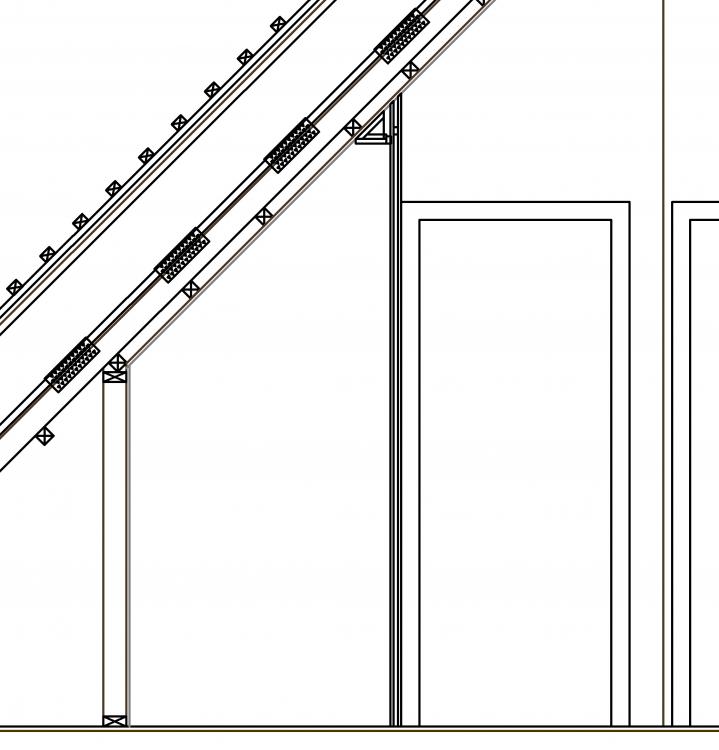Leaderboard
Popular Content
Showing content with the highest reputation on 03/18/17 in all areas
-
With respect to the ESBE valves, WUNDA have selected the ones in the 35-600C range, ESBE also do 20-43oC versions of the VTA322 (valve fitted 5 port manifold) so you could just replace the ESBE valve and then run your manifold at the lower temp. I have attached the Wunda data sheet M11 Standard ESBE Pumpset.pdf and ESBE VTA320_520_en_E_LR.pdf for the corresponding valves.3 points
-
Still worth looking at the whole cost, though life, of a wet versus dry system, I think. An electrically heated towel rail is a fair bit cheaper to install than a plumbed in one. I reckon a temperature controlled electric towel rail, on for an hour in the morning and an hour in the evening, probably costs around £10 a year to run.2 points
-
Ian, Crofter and others have made some very good points. A lot of the value for money discussion is about overall balance. In our case having a traditional "Cotswold stone" exterior (or the Northampton equivalent which looks the same and costs as much) was the dominant cost. Making the house passive class was small beer in comparison. Keeping the design simple (four walls, singe pitched roof; sensible windows sizes;; not fancy design statements; putting all wet services around a central core) will keep the costs down. Only add fancy stuff if it is really going to add value that you want. For example, there's no point having a wall of glass to overlook a local housing estate, and giving the neighbours a full show of your and your wife's bits and pieces when you want to get out of bed to have a pee. Ditto avoiding architects, project managers, quantity surveyors -- these are great if you are rich and have a fancy build, but you could easily find yourself spending out £50K+ on stuff you could do yourself. Keep the design simple; minimise the number of major sub-contractors; pick a local builder with a good local rep who wants to keep it. Have a clear idea of what you and your partner want to do yourselves and what you need to pay hard cash for a "suitable qualified person" to do is a good point to consider. Some specialist stuff, you have to subcontract. IIRC you are a sparkie. If you have your tickets then you can do all this yourself, and if you haven't then you can still probably do it all yourself, but get a mate to certify it. But what about woodwork, ... what do you want to take on and what do you want to pay for? There's no point of going from a wall U-value of 1.6 to 1.2 unless you have first sorted out the MVHR system because by 1.6, your air leakage is dominating your overall efficiency. I personally thing that beam and block floors are crazy: why stick an air void under the house which is only going to kill the thermal performance of the floor? Concrete isn't known to suffer from dry rot. But a lot of this is down to you choosing the right local builder, and staying within his (or her) comfort zone. So if you do go for beam and block; then keep it simple; put the beams low; then 200mm EPS min and a single 100mm concrete layer with the UFH embedded in it. Use the continental approach of casting the whole lot as a single slab before you go above FFL. If you are going to use a blockwork skin, then read up on Tony's House joist socks, because air sealing the joists in a conventional build is a major pain unless you address in the build -- at which point it becomes trivial. Think about how you are going to do thermally efficient gap closing. Throughout the news and on this site, you will see the consequences of crap quality control in using block thermal PUR insulation, or the equiv. As @Declan52 says, a blown insulation such as cellulosic filler or balled EPS avoids all of these risks. Lastly design the house to your own specification, then make sure that it is actually built to it, and then take advantage of this. It really isn't that hard to get the worst winter months' heating requirement down under 2 kW. But once you are down at this level, then why spend £10-15K on some complex central heating system? As I said, stick some UFH loops in your slab and use a small heater / ASHP / combi + buffer. You might need a towel rail or two heated but if the house is at this spec then there's no point in putting in upstairs heating.2 points
-
Do you have a multimeter? If the element has gone, then to be honest I would get a new tank, it will not cost a lot more, will be better insulated, and will have standard cheaper elements for next time.1 point
-
If you have 230v at the live at the tank then do you have 230v coming out? If yes, element is fried, if no then stat is fried. And +1 to Jeremy's reply.1 point
-
I don't know much about Howden 6 bolt heaters, other than they are expensive to replace when compared to the more common threaded ones (around £80 to £90). They do use a fairly standard short thermostat (the block where the line connection runs to) and you can check that with a meter, as my experience with immersions is that if they just stop working it's often the thermostat, if the blow the trip it's often the element itself. Isolate the power, disconnect the cable and check for continuity between the thermostat output to the element and the line connection. The thermostat switch should be closed when it's cold. Try adjusting the temperature setting to see if you can hear a click, as very occasionally you can unstick a stuck one like this. You can probably get a replacement thermostat that should fit the Howden sense pocket OK, I'm pretty sure they use a standard short thermostat.1 point
-
My immersion thermostat packed up a few months ago. IIRC the resistance should be around 18 ohms. Might be that and not the element.1 point
-
I originally wanted a passive slab but was quoted £1000+ for an SE to design and sign it off, we are on clay and the BC was slightly wary of a slab so I copied the Golcar passive house foundation which is a normal strip foundation but insulated and my BC accepted this with no additional SE costs. He also accepted 200 mm full fill cavity insulation and a warm roof with 300 mm of the same insulation. As stated before the costs of going the passive route need not be much more, it's all about the detail.1 point
-
There are a good few here who went down the block route, me included, so spend the time before your build starts researching every aspect of it to see how you can improve on the efficiency of your build and come back and post any questions you need help with. If you are a spark mhrv will be easy to install by yourself, i done my own. As a side note mine is 220sqm and with a family of 5 my space heating and dhw comes in at approx £300-£350 per year depending on the price of fuel. My PV generation covers my electric bills with £25 profit last year.1 point
-
Yes Peter, similar to you. I had planned E7 for DHW and hoped that towel rails and electric UFH turned off at 6am would still be warm enough by the time we rise!!! Seems a shame not to use the COP of the ASHP and E7 price to reduce heating costs. Then again how much will I be saving if they are on for about an hour each time they are used??? Sometimes we can over complicate these things ?1 point
-
Oh, and that doesn't include "local transport, foundation and installation". Presumably add another couple of thousand quid, at least, for all that. So it's as good as something that costs less than a third the price? And has a lot more to go wrong with it in the future? Where do I sign up?1 point
-
Website designers who think it's effective to have a high bandwidth video start in virtually full screen mode need to be banished to the countryside and be forced to endure rural "broadband" speed. Perhaps then they'd realise that a fair part of their target market just clicks away from the website when it fails to load after 30 seconds................1 point
-
Traditional construction can be built to very high even passivhaus standards with a little care, the right spec and not too much additional expense. Google the Denby Dale or Golcar passivhaus and most of the construction details, thermal values and costs are online.1 point
-
towel weigh in day 2 including faye washing her hair and me not wiping myself down, F: before: 613 after 688 E: before 502 after 579 assuming we have a "similar" surface area. (roughly the same height, and certain bumps cancel each other out) looks like i have as much hair on my body as Faye does on her head1 point
-
Then go for a cavity that is a min of 150mm wide and get the beads blown in. Don't let the builder put cavity insulation in as the beads will give a better real world result. Also means you save some money as the beads don't have to go in till just before it's plastered so helps cash flow at the start.1 point
-
If you get a company to provide a package of work, which is what we did, then they should zero rate the whole job, so you don't pay any VAT. The same goes if you take this approach for the build; in our case the supply and erection of the foundations and frame included some costs that, if we'd contracted for them separately, wouldn't have been zero rated. For example, there were structural engineer costs for the foundation and frame where the VAT wouldn't have been reclaimable, had we contracted for them separately, but because these were included in the one contracted build package they became zero rated.1 point
-
1 point
-
1 point






.jpg.c21f3ac78c9b7efd90cbdcb312744dc5.thumb.jpg.7adcad4c0e384f5ecd7d56b0618df6e5.jpg)


